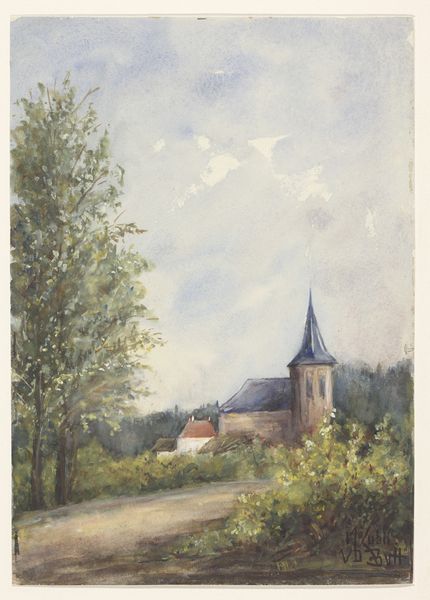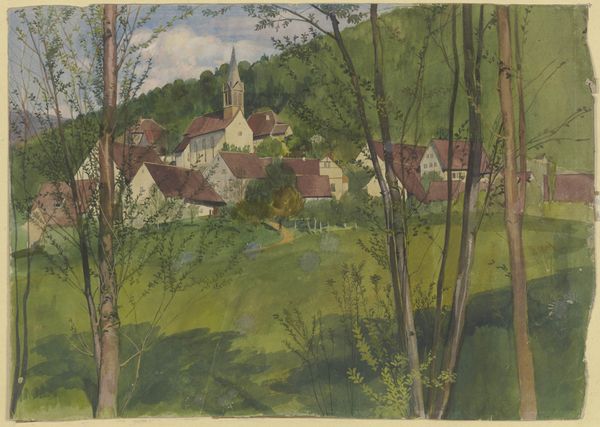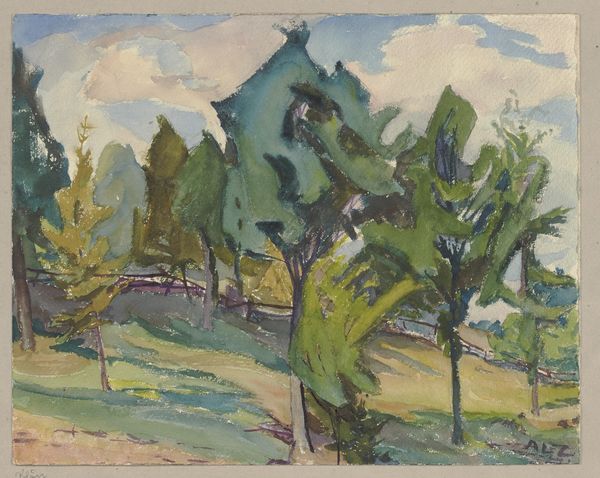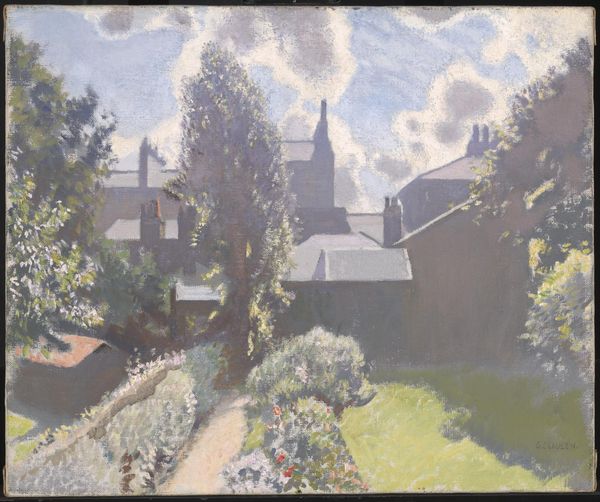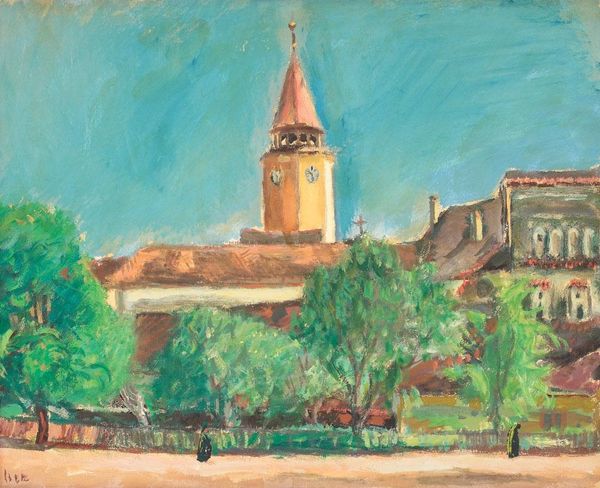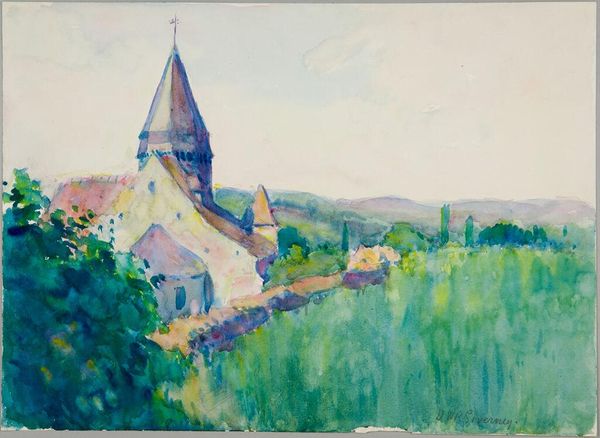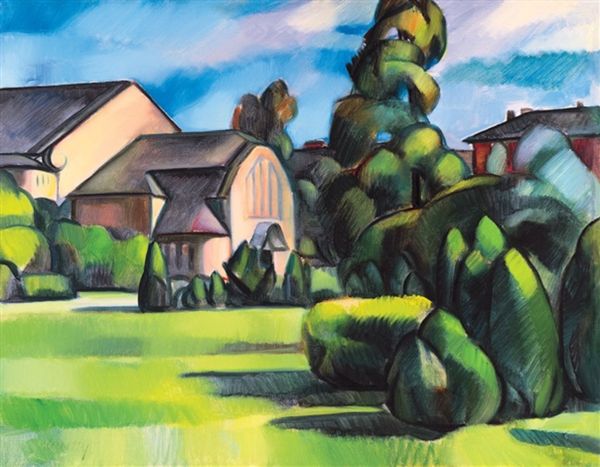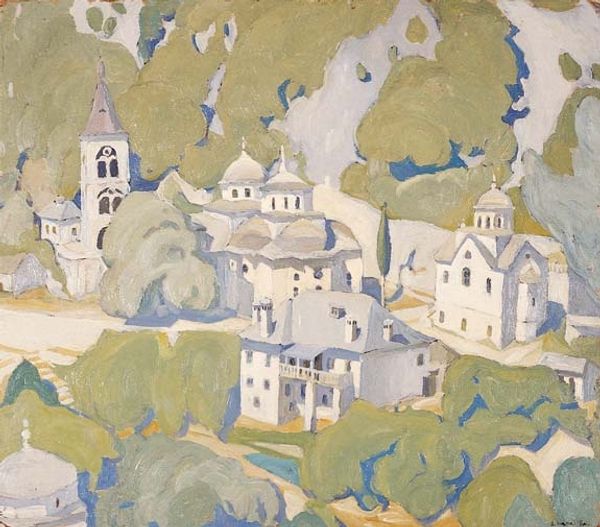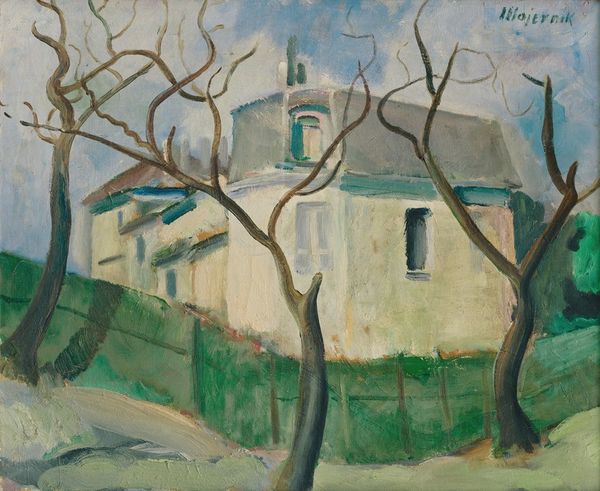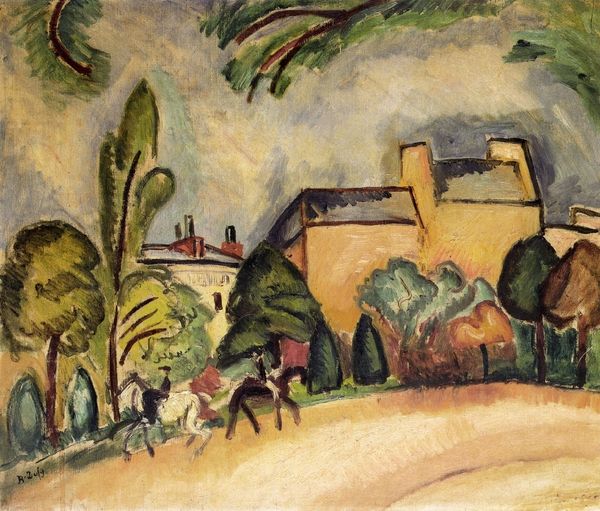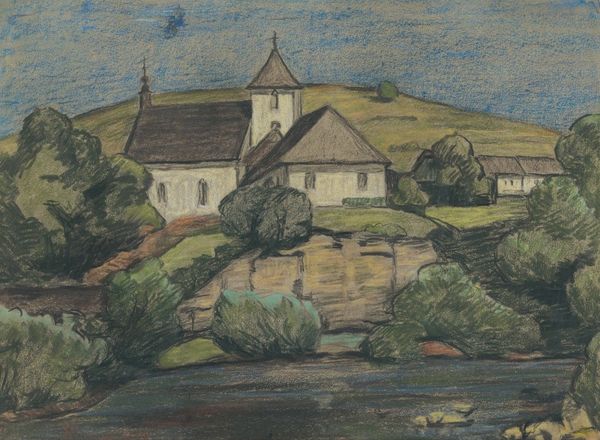
Copyright: Public Domain: Artvee
Editor: This is Léon Spilliaert's "Landschap voor 'Au temps que Nanette était perdue'", made between 1930 and 1931, using watercolors. It's such a deceptively peaceful scene; the church nestled in all that foliage feels almost dreamlike. How do you interpret the relationship between the landscape and the church in this work? Curator: It's deceptively serene, isn't it? Spilliaert, though, often used that veneer to explore deeper anxieties. Think about the role of the church historically. It represents not just faith, but also power, societal structures, and often, oppression, especially for women. Then consider the landscape - that wild, almost overwhelming growth. Editor: So, you see a tension between those two elements? Curator: Absolutely. Is the church being embraced by nature, or suffocated? Consider, too, that the title references a lost figure - Nanette. Who was she? And how might this landscape reflect her story? Perhaps the lush, enclosing landscape signifies societal expectations, while the church embodies the judgment Nanette might have faced. Spilliaert might be challenging the rigid moral codes that led to Nanette being "lost" in the first place. Editor: That reframing really opens up the painting. I was only seeing a quaint landscape at first glance! Curator: Precisely! By questioning the historical and social contexts, especially gendered ones, we can reveal a new layer of complexity within seemingly simple images. What do you make of the way the path seems to disappear, swallowed by the vegetation? Editor: I hadn't noticed that before. Maybe it symbolizes a lack of clear choices for women at that time? The path just fades away... Curator: That's exactly the kind of intersectional reading that makes art history so compelling. We are bringing the artwork into a dialogue with contemporary understandings. Editor: This has definitely shifted my perspective; I'll never look at a landscape the same way again! Curator: Wonderful! That's the power of contextualizing art - it reveals silent narratives, ready to be heard.
Comments
No comments
Be the first to comment and join the conversation on the ultimate creative platform.
